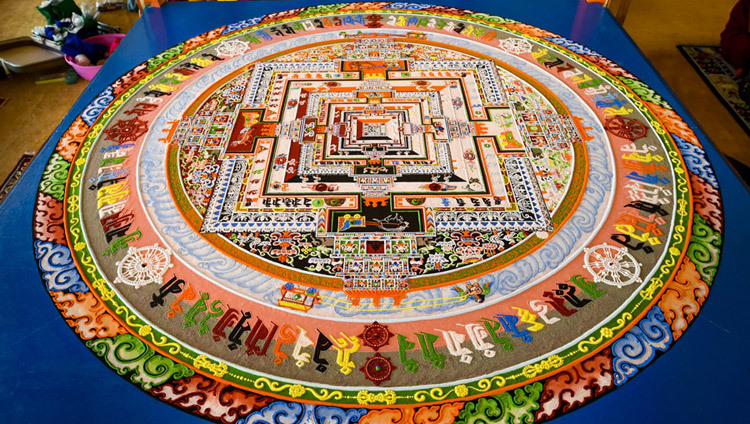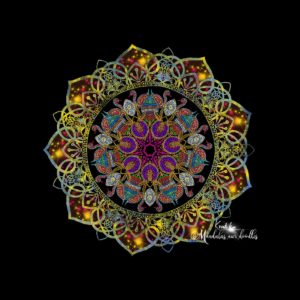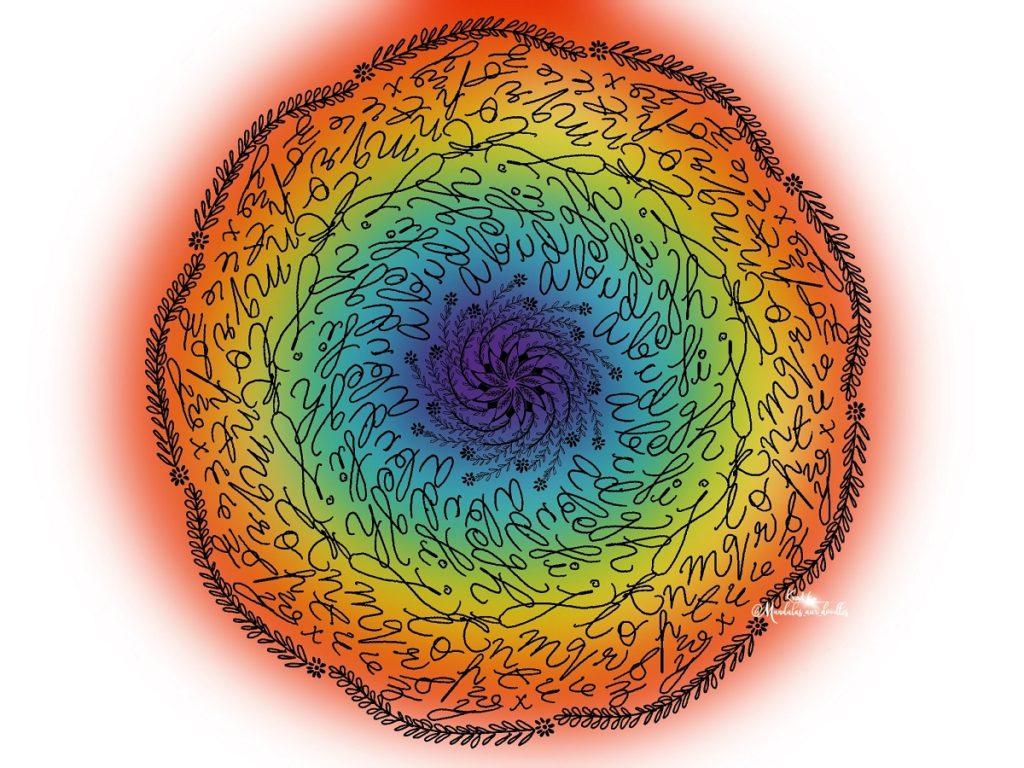Messages of mandalas
After days of working on it, when a mandala is finally ready, it is destroyed by the Buddhist monks who make it. An ancient artform, it is now being given modern edges and is also being used for meditation.
With its many colours and intricate designs, a mandala can be prepossessing. A pattern of concentric circles with various geometric figures creatively crafted inside them, mandala is an ancient artform, also associated with meditation and healing, and traditionally practiced by followers of Buddhism.
The world mandala means circle in Sanskrit and is seen as a schematic visual representation of the universe as well as a method for psychophysical and spiritual practices.
Commonly used in Buddhist teachings, which are primarily inclined towards training the mind, mandalas are also made by many as a form of self expression.
“A complex work of art, a mandala can represent one’s view of life, which they draw within the circles; and thus each mandala differs from the other, just like the lives of all beings,” says Sumit Singh Jamwal, founder Escape Route, a travel company that often makes trips to Ladakh in the northern state of Jammu & Kashmir, where the mandalas are a common sight.
“They could also be representing world peace, love for all sentient beings and gratefulness for this life,” he says.
Now a part of religions other than Buddhism and a global phenomenon, mandalas hold different meanings for its practitioners.
“The art dates back to the first century when Buddhist monks carried mandalas with them through the trade route across Asia. This art is thus found in Hinduism, Christianity and Judaism and even Islam,” says Sayani Nandy, a mandala artist from the western Indian city of Mumbai.
“Mandalas depict the cosmological traditions of Hindus and Buddhists. In Hinduism, they are a tool to view the spiritual universe, and represent the cycle of occurrence, reoccurrence and existence. Many of these designs are also symbolic of Hindu deities, such as Ganesha and Saraswati,” says Nandy.
Mandala making
Traditionally monks make intricately-designed mandalas using coloured sand while chanting and worshipping. Often, it can take weeks to complete the mandala and which they later destroy.
“Since Buddhism teaches and emphasises the fact that nothing is permanent in this world, the monks disassemble their mandala shortly after creation, often running water over it until its blessings are spread throughout the temple,” says Nandy.
Another way of undoing the mandala is also smudging it with hands, a process that allows the monks to collect the sand that is later distributed as a holy offering amongst the devotees.
Modern mandalas
Mandalas have now become part of everyday lives for many; and one can credit their spiritual healing capacities for this.
“Initially, I started making mandalas for their meditative properties as I was going through a rough patch. Eventually, I found the concept very intriguing and kept practicing it,” says Nandy.
The artist started off with traditional/ conventional mandalas and now makes them in modern ways. Some of her artwork depict crisis like the one in Sudan or issues such as smoking cigarettes. On the other hand, some of her work also lends out inspirational and motivational messages and ideas.
“Some of the contemporary adaptions are the Yoga mandalas that are used in meditation classes, dream catchers that are believed to protect a sleeping individual from nightmares or other forms of mental and spiritual discomfort during the night. Mandalas are also used to create special healing circles,” says Nandy.
Make your own mandala
One of the most convenient ways to make a mandala is using pen and paper. “You can start with a dot and keep making concentric circles around it till your desired size (a good start is one about 25 cm in diameter). Then start making intricate designs in every layer. Drawing with a pen helps create intricate patterns. Black paper can be very dramatic because it shows off the colours. You can use paints (watercolour, acrylic or gouache) to create a colourful mandala. You can even create digital mandalas using drawing apps like Procreate, Amaziograph etc.,” suggests Nandy.
“I love creating mandalas both by hand and digitally. I never took lessons or tutorials on how to make them. Growing up in India I knew what a mandala was and how it was used during festivals. I usually made them using wood dusk and coloured chalk. I took inspirations from colours I had in hand and thought about the properties of each colour and added that in my work; and I still do that. Later when I studied Buddhism and practised chakra healing, my knowledge about mandalas grew,” says Kratika Agarwal, a mandala artist and illustrator based in Netherlands.
“I usually make mandalas for meditative purposes. It helps me release my anxiety. Making a mandala for me has never been challenging. I combine colours and designs according to the emotions I feel. I rarely add colours like red or black as for me they represent anger and strong emotions,” says Agarwal.
Some unique mandalas Agarwal makes include Yin and Yang designs that she says help her achieve greater balance in mind and in life; butterfly mandala that helps with renewal and moving forward; star mandala that help with deeper and spiritual exploration; flower mandala that reminds of growth.
“In a mandala, particularly the middle, is used as an object to focus attention during meditation. The symmetrical geometric shape makes sure that one’s attention is automatically focused on the centre. Cultures all over the world use the circle to symbolise balance, focus, art, logic, science, math, and meditation.,” says Agarwal.
Mandalas are being recognised globally; and not everyone is making them in a conventional way or for traditional reasons.
They can be seen on apparel- printed or knitted, as graffiti, body tattoos, and even in 3-D motion images, where they induce psychedelic effects.















